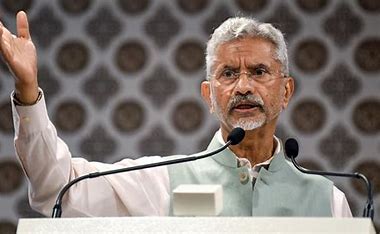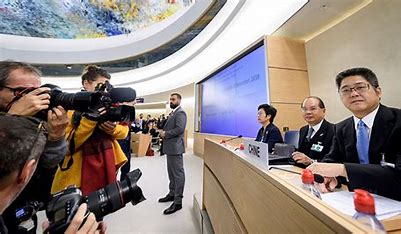
Netaji Subhas Chandra Bose has a unique place in the minds of people from the subcontinent. His was a composite vision of liberating Mother India from the throes of colonialism, its oppression and violence, and rebuilding a modern nation through dynamic patriotism. Inspired by the values of India’s civilisation and composite cultural identity and endowed with a scientific temper, he embarked on a mission whose relevance continues even today.
The events of the past seven decades, the failure of the two-nation theory based on synthetic identities, the violence and suffering imposed on people due to Partition, the continuing instability, the ensuing struggle and genocide resulting in the formation of Bangladesh and the meltdown of Western countries, to name a few, only confirm the relevance of his vision. These events are the outcome of proven historical blunders, the remnants of imperialism and signals of confusion and conflicts in the future. They have now become grounds for external forces making hostile incursions. As Bose had said, “Special efforts will be needed to keep our people together…because alien rule has demolished and disorganized us…”
To remember Netaji means to become aware of the mission he launched and to address that incomplete task. It calls for an imaginative approach and commitment, within the nation as well as in the neighborhood. The focus is on the people born in the subcontinent, the children of Mother India and the task before us is to generate awareness, organize and mobilise them, based on values, vision and resolute action. This is the historical opportunity to initiate corrections.
Netaji’s discovery of the failing impact of passive resistance and non-violence needs a deeper understanding. Civilized means were taken as a weakness. It was not Wordsworth, Keats or Shelley of England, but the likes of Robert Clive and his lineage who were the perpetrators of oppression and exploitation. They had to be confronted. The passive resistance of the masses seems to have provided a comfortable space for the likes of General Dyer and their violence was continuous, with the passive Indians at the receiving end. Moreover, the people worked for the British, provided them labour and fought their wars, and in return got the Rowlatt Bill and other such ordinances. This became the practice and order of Her Majesty’s governance in India. The trend is traceable through the pages of history. “Britain…ruined India economically, politically, culturally and spiritually,” said Bose.
He sought to address the challenge differently through more compelling action. Keeping abreast of developments across the world, and with the mission of liberating his motherland, he travelled far and wide, mustering support and developing an action plan. For him, young men and women formed the core human energy needed to rise and rebel against the colonial forces—which took shape as the INA. It was complemented by the call for rebellion by Indian soldiers, which would turn out to be a major factor for the British being forced to depart. However, before parting, they caused the real damage. Unfortunately, it happened when Netaji wasn’t in our midst and we succumbed to a highly compromised notion of independence. Freedom lay buried under an age-old living civilisation which was allowed to be amputated. Different flags were raised over the bleeding bodies and corpses. The adverse impact of that continues till date haunting the subcontinent and dragging down progress across the region. With the parts disjointed and the masses sidelined, vested interests and their establishments continue to mushroom.
Today the task is to realise the full potential of the people and resources in a meaningful and harmonious fashion. India has a highly responsible and important role to play. Even for its own growth and development, it will need to bring to the fore the forgotten, and perhaps injured and manipulated, perception of the different parts. A renewed understanding could act as a lighthouse for civilisation, freedom and development. There is a need to orient the minds of the people of the subcontinent towards a new consciousness, which is relevant and necessary, through example and imaginative approach, not appeasement. India has the inner strength to do this. The offspring of INA comrades in the region could be the catalysts in this process—the ones brought around the benign vision of Netaji and by parents and grandparents who participated in and made sacrifices for Netaji’s cause. A dialogue for a new order needs to be nurtured in the larger interest, as Netaji had envisioned.
Present-day communication mediums make it possible to generate interest, awareness and dialogue rapidly. There is a growing realization about the mistakes of the past and the search for an alternative. The same can be perceived—although still as a suppressed desire—among people across the subcontinental region. It needs to be addressed now. Recalling Netaji’s words, “We shall have to bring different parts…closer to one another…we shall have to foster a common spirit among the entire population.” This sets the context of action in the future and this could be achieved by programmes and discussions on TV, radio, through mass media and the like. Sports and cultural exchange, wherever possible, across the subcontinent can also go a long way in initiating a new understanding of deeper bonds.
India has a median age of 29 years in 2020. This means that we have a very large number of young women and men who need attention and to be meaningfully engaged in constructive work covering various streams, which is in tune with Netaji’s thinking. Guided by disciplined training and the supervision of ex-servicemen, who constitute a highly qualified but underutilized human resource available across the country, the nation can be turned around on the development front and become a force to reckon with globally. There are opportunities for skilled Indians in the world, and towards this end, we should establish the Netaji Subhas Chandra Bose Mission of the Youth. Fortunately, details regarding the same are being worked out.
Germany and Japan also figured prominently in Netaji’s scheme of things. Given the cordial relations with both the countries, it is proposed that we commemorate his links with them through voyages to these destinations, as part of the Netaji Trail on both land and sea routes. At another level, given their fast-ageing populations, both these countries are in dire need of skilled working age people. For this purpose, we could collaborate in setting up country-specific campuses of Netaji Subhash Chandra Bose Institutes for Learning and Skills Training. This initiative will be beneficial to all and strengthen the bonds among the nations further. Besides, in the emerging global scenario, there is also a growing potential of synergy in strategic terms with Japan and Germany.
At another level, education curricula need to be redesigned for including dynamic patriotism with a modern scientific outlook and attitude towards life, which is also sensitive to our civilization’s values and vision, and upholds the principle of ‘Vasudhaiva Kutumbkam’ and of living in harmony with the rhythmic energy of nature. The time right now is opportune for working towards this goal.
On the 125th birth anniversary of Netaji Subhas Chandra Bose, we are witnessing an interesting historical synchronicity as present-day India takes on Chinese imperialism resolutely. As the quote goes, “In this mortal world, everything perishes and will perish, but ideas and dreams do not.” Let this be the defining moment in the process of building on past ideas for a new future.















